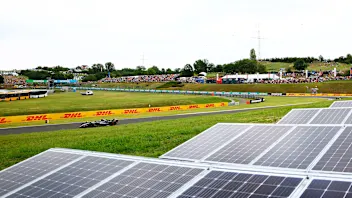explained
How Formula 1 has cut its carbon footprint by 26%
Formula 1 is significantly advancing its Net Zero by 2030 sustainability goal, announcing a 26% reduction in carbon emissions by the end of 2024 against its 2018 baseline. This achievement, over halfway towards its 50% target, comes despite a period of substantial growth, with more races and surging attendance.
The sport has implemented various initiatives, including transitioning to renewable energy for facilities, expanding remote broadcast operations to reduce travel, and optimizing freight logistics with new containers, sustainable aviation fuel (SAF), and biofuel trucks. Further efforts include a rationalized race calendar to minimize travel, and from next season, all F1 cars will use advanced sustainable fuels, a technology with potential broader applications for road cars.
